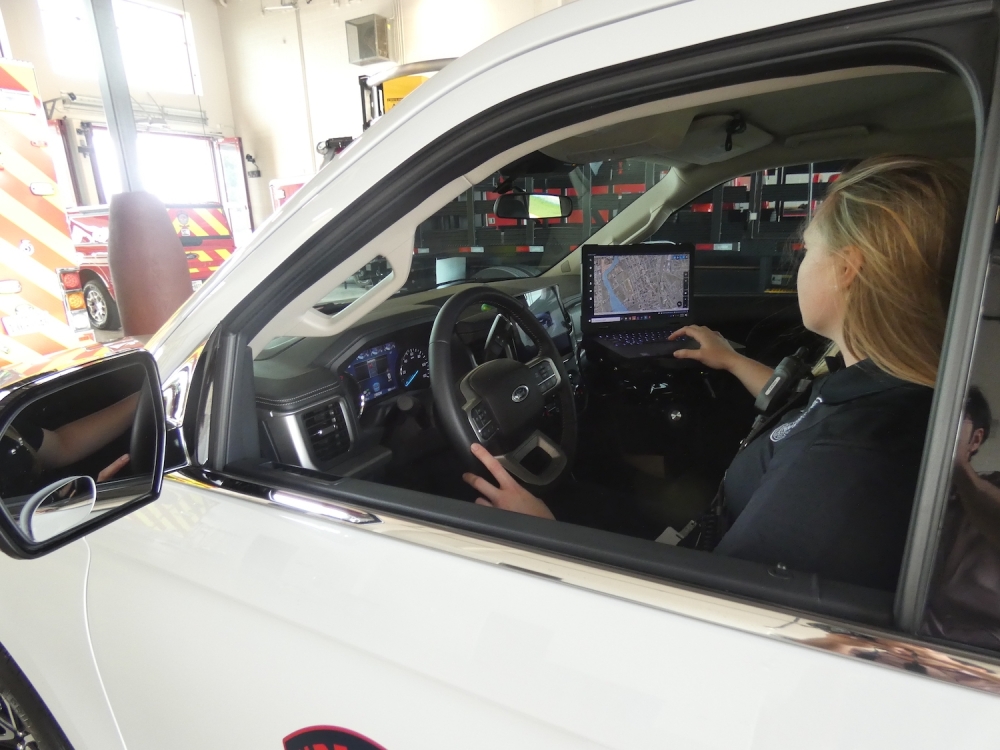New Braunfels Fire Department Chief Ruy Lozano said city officials prioritized establishing the program to tackle the roughly 1,300 annual calls they get from 911 “super utilizers.”
“A super utilizer is anyone who calls 911 more than four times in a year,” Lozano said. “[It] doesn’t necessarily mean abuse. It just means that unfortunately, [EMS] ... has become the primary care physician for a lot of people in our community.”
Two-minute impact
Cities that utilize mobile integrated health programs focus on delivering health care to residents that might not otherwise be able to access it. Reasons for that inability could be due to a lack of health insurance or other issues.
The program focuses on identifying residents who have historically called 911 on an above-average frequency for nonemergency services, city officials said.
The New Braunfels Fire Department uses raw call data to determine which patients need to be added to the program. Fire department staff and other emergency responders can also make referrals. While the program vehicle carries basic life support equipment, the MIH specialists help patients navigate and receive local resources outside of the emergency response system. New Braunfels officials receive around 1,300 emergency calls annually from residents identified as high callers, with some calling as many as 20-30 times per year, Lozano said.
The program was announced in November 2023 and launched in partnership with $81,000 in funding from the McKenna Foundation and other sources, said David Ferguson, communications manager for the city of New Braunfels.
“MIH allows a dedicated paramedic to meet with patients on an ongoing basis to develop an individual health care plan ... and eventually graduate from MIH services by being connected to a medical home,” said Alice Jewell, CEO of the McKenna Foundation. “Offering the MIH program reduces the overall cost of EMS, and focuses EMS on necessary emergency services.”
Dig deeper
The New Braunfels Fire Department has one MIH specialist on staff and is in the process of hiring another. MIH Specialist Ashley Cammack is the lone operator of the program.
“Sometimes people need help ... and so I am an advocate for them, to their [primary care physician], to their insurance, to their doctor’s offices,” Cammack said. “I try to identify why this patient has not gotten the care that they need, what they need, what they deserve. Everyone deserves quality of life, everyone deserves to be able to stay healthy [and] happy at home independently.”
Sometimes the issue is simply a lack of transportation to appointments. Cammack said one patient who had a stroke was not going to doctor’s appointments because it left her unable to fill out paperwork before the appointment.
“[I said] ‘let’s send you to your doctor’s appointments with these things already filled out.’ Something as simple as that,” Cammack said. “It was just something that wasn’t identified prior to me coming into this role.”

About the programs
While reducing the amount of nonemergency calls to 911 was the initial goal of the city’s MIH program, that is not the only service such programs can potentially offer.
According to a 2023 survey by the National Association of Emergency Medical Technicians, of the roughly 400 emergency medical services agencies nationwide that have launched MIH programs, 67% offered high 911 utilizer programs. But many other programs are offered through the department, such as hospital readmission prevention, hospice care, crisis outreach and more.
The city of San Antonio began its MIH program in 2014 with five paramedics. It now has 16 full time staff and offers several services. Reynaldo Garza, a chief in the San Antonio Fire Department, said addressing high-volume callers is a good first step in setting up a more comprehensive program.
“That just seems to be a good segue into MIH, because you start finding out exactly what the needs in the community are,” Garza said.
Next steps
Since the program is still in its infancy locally, Lozano said the coming months will determine when and how the MIH care might expand. Lozano said that the San Antonio Fire Department was a tremendous help in setting up the New Braunfels program, and once more needs are determined, they would be the first he will ask about setting up new programs.
“We’re doing a community-needs assessment again, trying to figure out what else our community needs,” Lozano said. “At the management level, we have to look at the demand and then ask what is [Cammack’s] capacity? I’m not going to get that information until we have at least six months to a year of data.”






